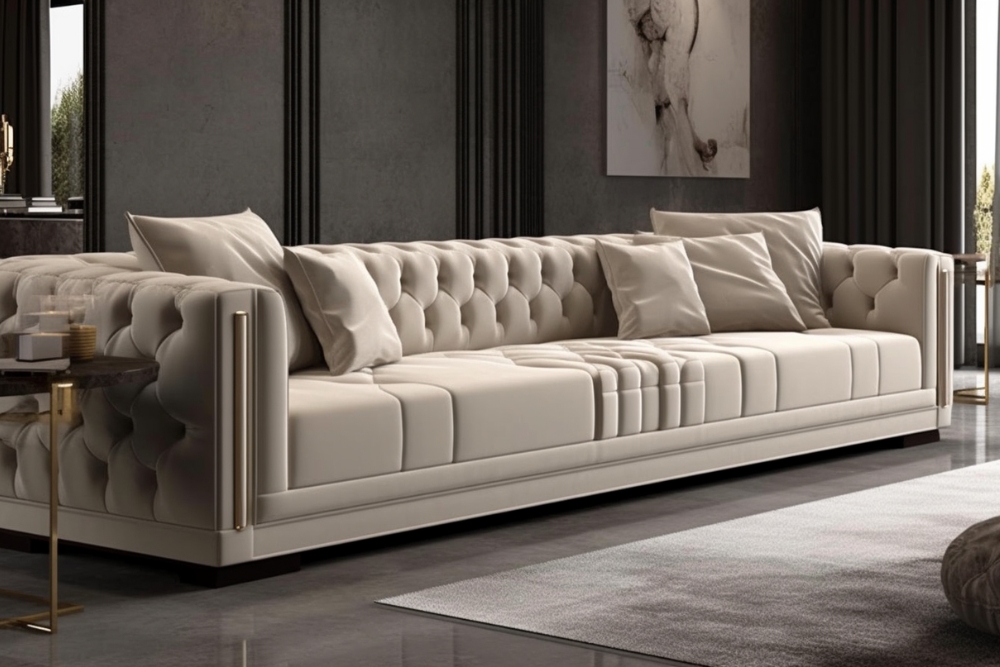Need New Furniture? What to Consider Before Updating Your Space
Choosing the right furniture involves more than just picking pieces that look good. Whether you're furnishing a new space or updating your current one, it's important to consider how each item will fit your lifestyle, space, and comfort needs. This guide offers practical insights to help you make informed choices that balance function, style, and long-term value—without the guesswork.

How can you assess furniture quality before purchasing?
Assessing furniture quality is crucial for making a wise investment. Start by examining the construction materials and methods. Solid wood, high-grade plywood, and metal frames generally indicate better quality than particleboard or plastic. Look for reinforced joints, such as dovetail or mortise-and-tenon, which offer superior strength and durability. For upholstered pieces, check the fabric quality and stitching. Run your hand over the surface to feel for any irregularities or weak spots. Additionally, test the furniture’s stability by gently pushing or sitting on it. Quality pieces should feel solid and not wobble or creak.
What factors should you consider when choosing furniture size and layout?
Selecting the right size and layout for your furniture is essential for creating a functional and comfortable space. Begin by measuring your room and any doorways or staircases the furniture must pass through. Create a floor plan, either on paper or using a digital tool, to visualize how different pieces will fit. Consider traffic flow and leave enough space for people to move comfortably around the furniture. For dining tables, allow at least 36 inches of clearance on all sides. In living rooms, arrange seating to facilitate conversation, typically with pieces facing each other and no more than 8 feet apart.
How can you balance comfort with design when selecting furniture?
Striking the right balance between comfort and design is key to creating a space you’ll love. Start by identifying your primary needs for each room. For example, in a living room, comfortable seating might be the priority, while in a home office, ergonomic support could be paramount. Look for pieces that offer both aesthetic appeal and functional comfort. Consider features like adjustable headrests, reclining capabilities, or ergonomic designs. Remember that comfort is subjective, so whenever possible, test furniture in person before purchasing. Sit, lie down, or work at the piece as you would at home to ensure it meets your comfort needs.
What should you know about furniture materials and durability?
Understanding furniture materials is crucial for assessing durability and maintenance requirements. Hardwoods like oak, maple, and walnut are known for their longevity and resistance to wear. Softwoods, such as pine, are more prone to dents and scratches but can be more affordable. For upholstery, natural fibers like cotton and linen offer breathability but may stain easily, while synthetic materials like polyester and nylon are more durable and stain-resistant. Leather is durable and ages well but requires specific care. Consider your lifestyle when choosing materials—homes with children or pets might benefit from more robust, easy-to-clean options.
How can you match furniture to your lifestyle and daily habits?
When selecting furniture, it’s essential to consider how it will integrate with your daily life. If you frequently entertain, opt for a dining table that can expand or living room seating that’s easy to rearrange. For those who work from home, invest in ergonomic office furniture that supports long hours at a desk. If you have children, look for sturdy, stain-resistant fabrics and rounded edges on tables and consoles. Pet owners might prefer leather or tightly woven fabrics that resist claw marks and are easy to clean. Consider storage needs as well—pieces with built-in storage can help keep your space organized and clutter-free.
What are some tips for creating a cohesive look in your space?
Creating a cohesive look in your space involves more than just matching colors. Start by choosing a unifying theme or style, such as modern, traditional, or eclectic. This will guide your furniture choices and help create a harmonious atmosphere. Consider the scale of your furniture in relation to your room size—oversized pieces can overwhelm a small space, while too-small furniture can look out of place in larger rooms. Use a consistent color palette throughout your space, but don’t be afraid to incorporate accent pieces for visual interest. Mix textures to add depth and warmth to your room. Finally, pay attention to the flow between rooms, especially in open-concept spaces, to ensure a smooth transition from one area to another.
When furnishing your space, remember that the best choices are those that reflect your personal style while meeting your practical needs. Take your time to research, compare options, and envision how each piece will function in your daily life. By considering factors like quality, size, comfort, durability, and lifestyle fit, you’ll be well-equipped to make informed decisions that result in a beautiful, functional, and personalized living space.




